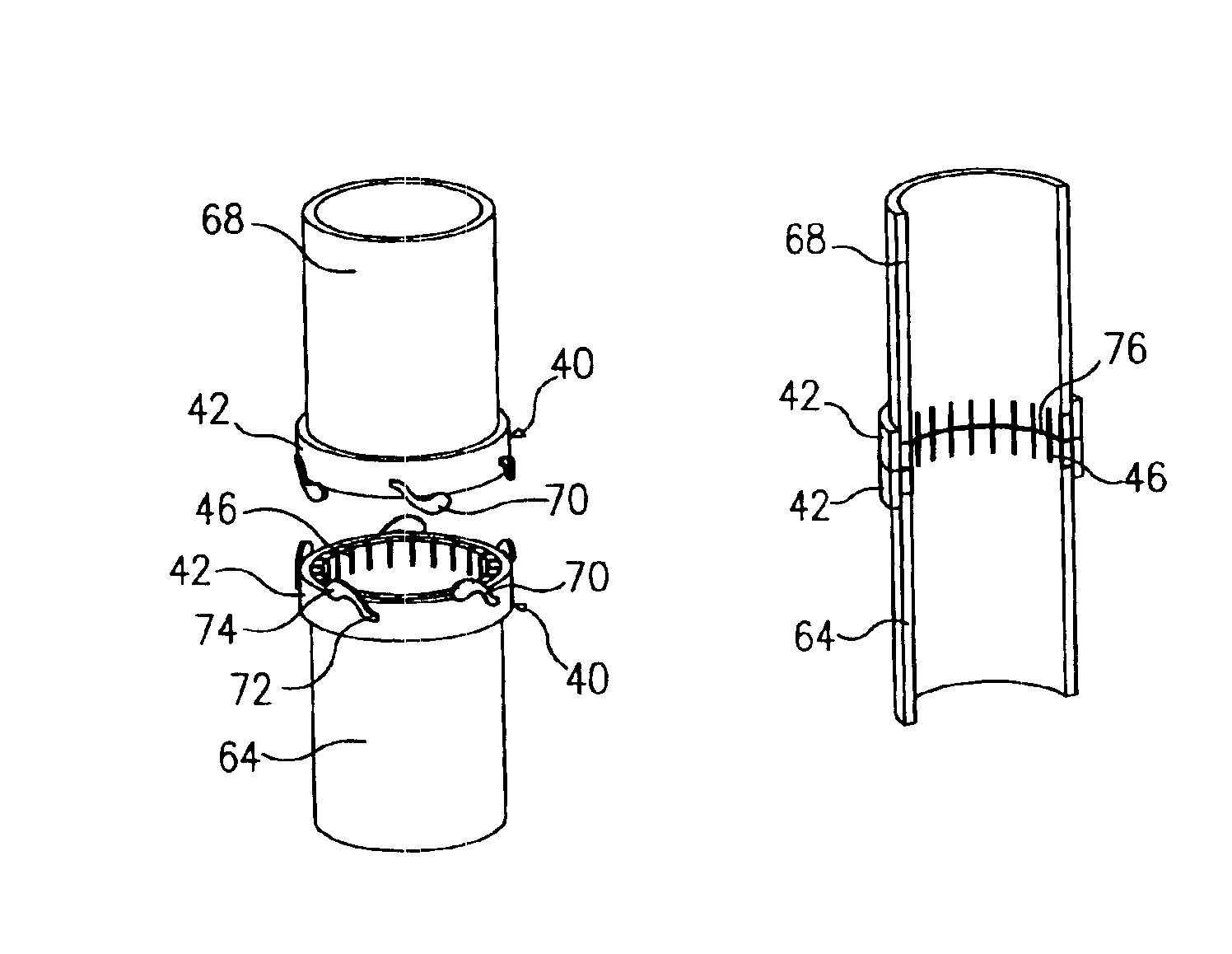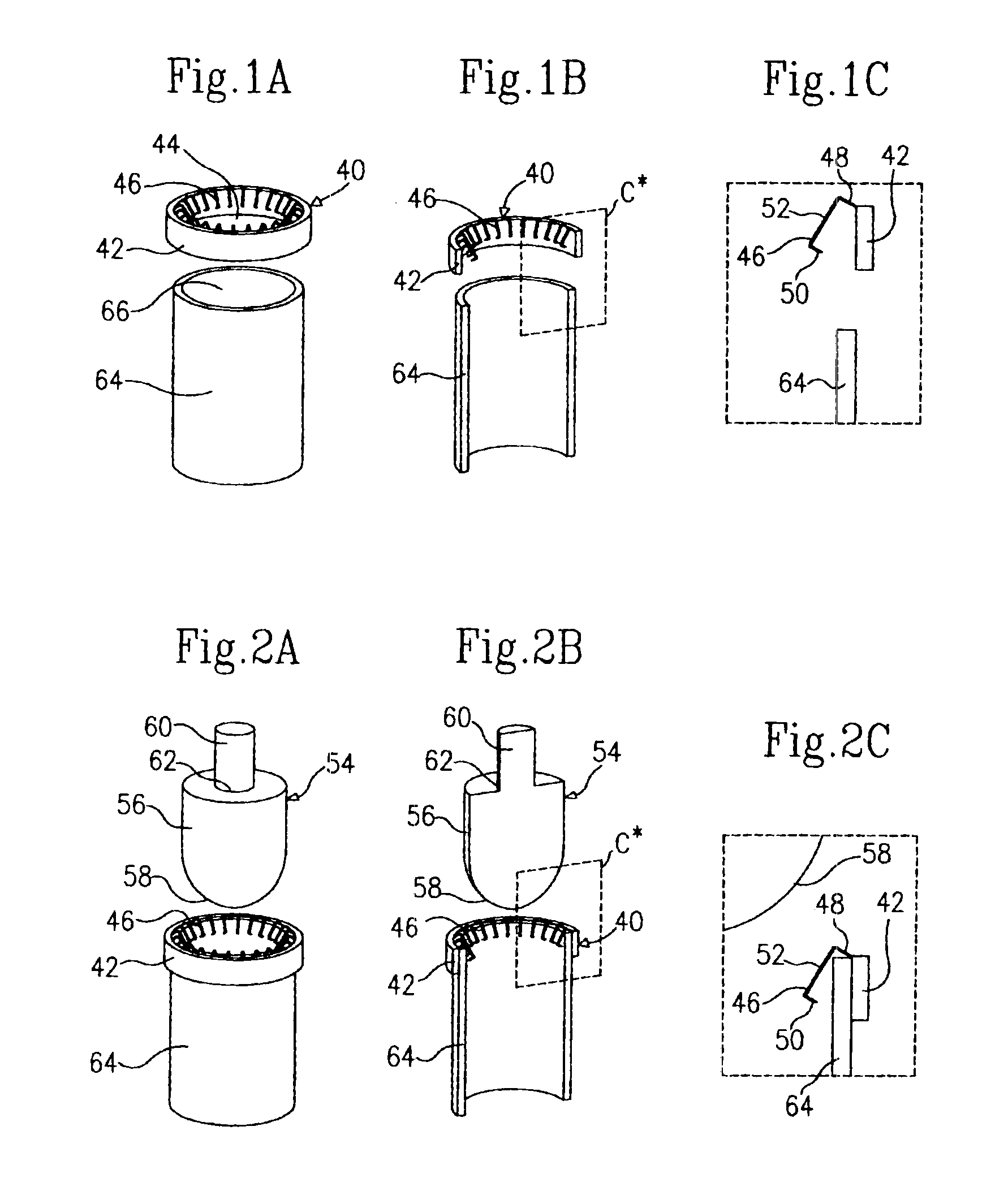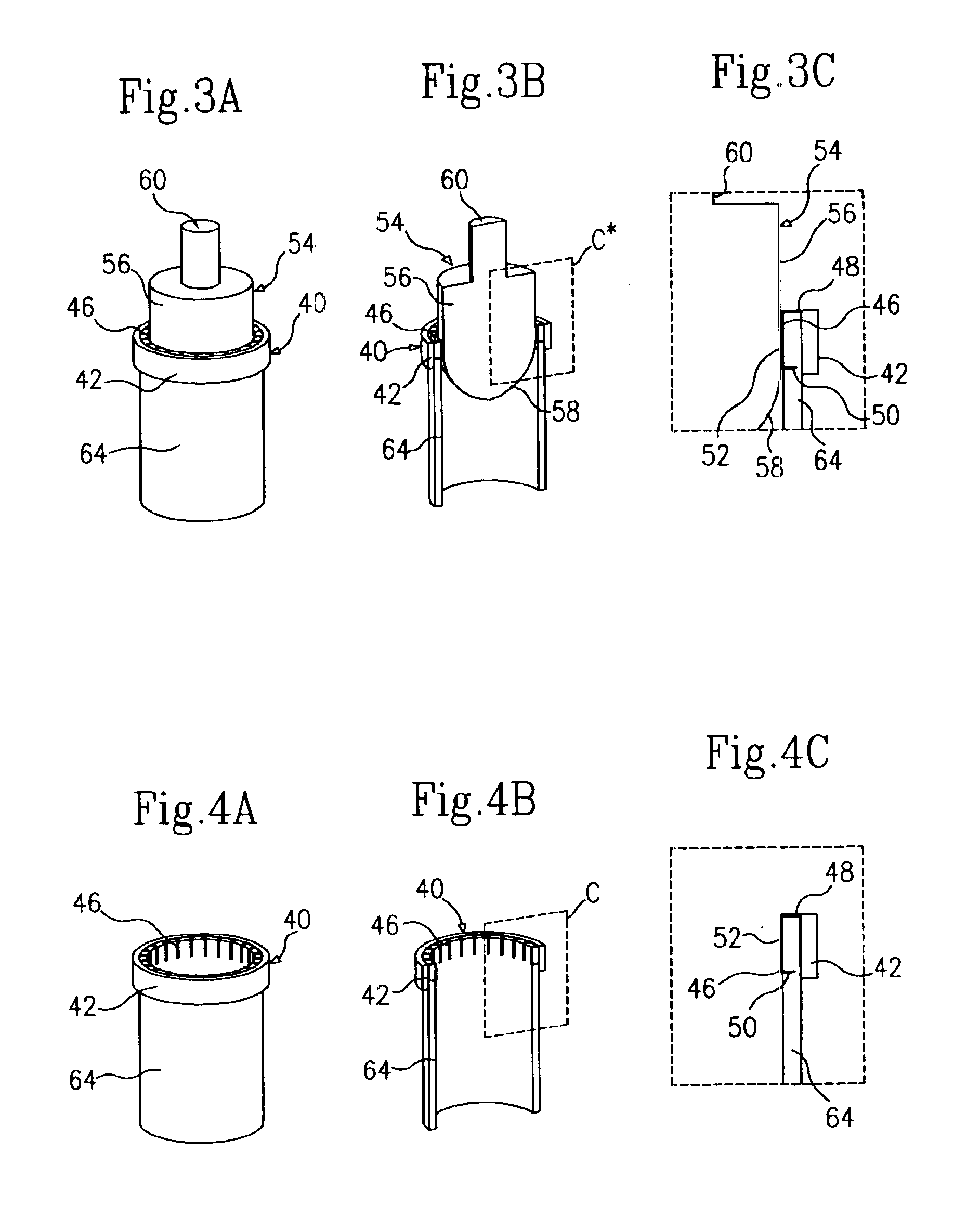Connectors for hollow anatomical structures and methods of use
a technology of connecting devices and hollow anatomical organs, which is applied in the field of connecting devices for hollow anatomical organs, can solve the problems of high cost, high complexity, and time-consuming surgical procedures, and achieves cost-effective implementation, simple manufacturing, and convenient use.
- Summary
- Abstract
- Description
- Claims
- Application Information
AI Technical Summary
Benefits of technology
Problems solved by technology
Method used
Image
Examples
Embodiment Construction
[0063]According to the present invention, I have developed a connector for attachment to hollow anatomical structures in a sufficiently fast, easy and reliable manner.
[0064]A specific preferred embodiment of an end connector and a method for attaching the connector to an end of a hollow tubular organ are shown in FIGS. 1A through 4C. For better visualization and understanding, the elements are shown in different views. They are shown in perspective views in FIGS. A. The same elements crosscut in half are shown in the same perspective views in FIGS. B. Portions of them, as defined by windows C* in FIGS. B, are shown magnified in schematic views in FIGS. C. Performing an end-to-end anastomosis of two hollow tubular organs attached with end connectors is shown in perspective views in FIGS. 5 through 7A. The end-to-end anastomosis crosscut in half is shown in a perspective view in FIG. 7B.
[0065]An end connector 40 is shown above an end-opening 66 of a hollow tubular organ 64 in FIGS. 1A...
PUM
 Login to View More
Login to View More Abstract
Description
Claims
Application Information
 Login to View More
Login to View More - R&D
- Intellectual Property
- Life Sciences
- Materials
- Tech Scout
- Unparalleled Data Quality
- Higher Quality Content
- 60% Fewer Hallucinations
Browse by: Latest US Patents, China's latest patents, Technical Efficacy Thesaurus, Application Domain, Technology Topic, Popular Technical Reports.
© 2025 PatSnap. All rights reserved.Legal|Privacy policy|Modern Slavery Act Transparency Statement|Sitemap|About US| Contact US: help@patsnap.com



